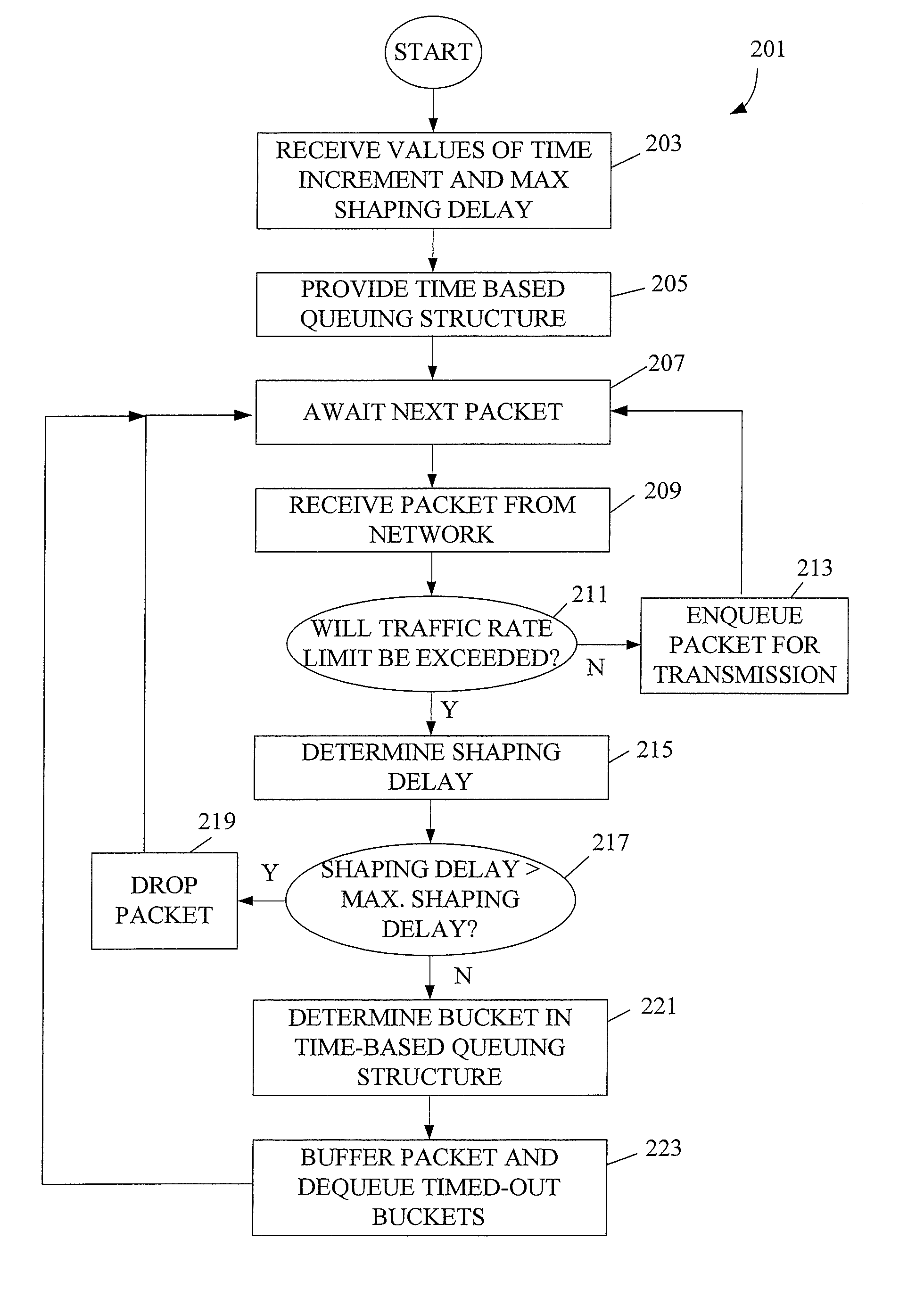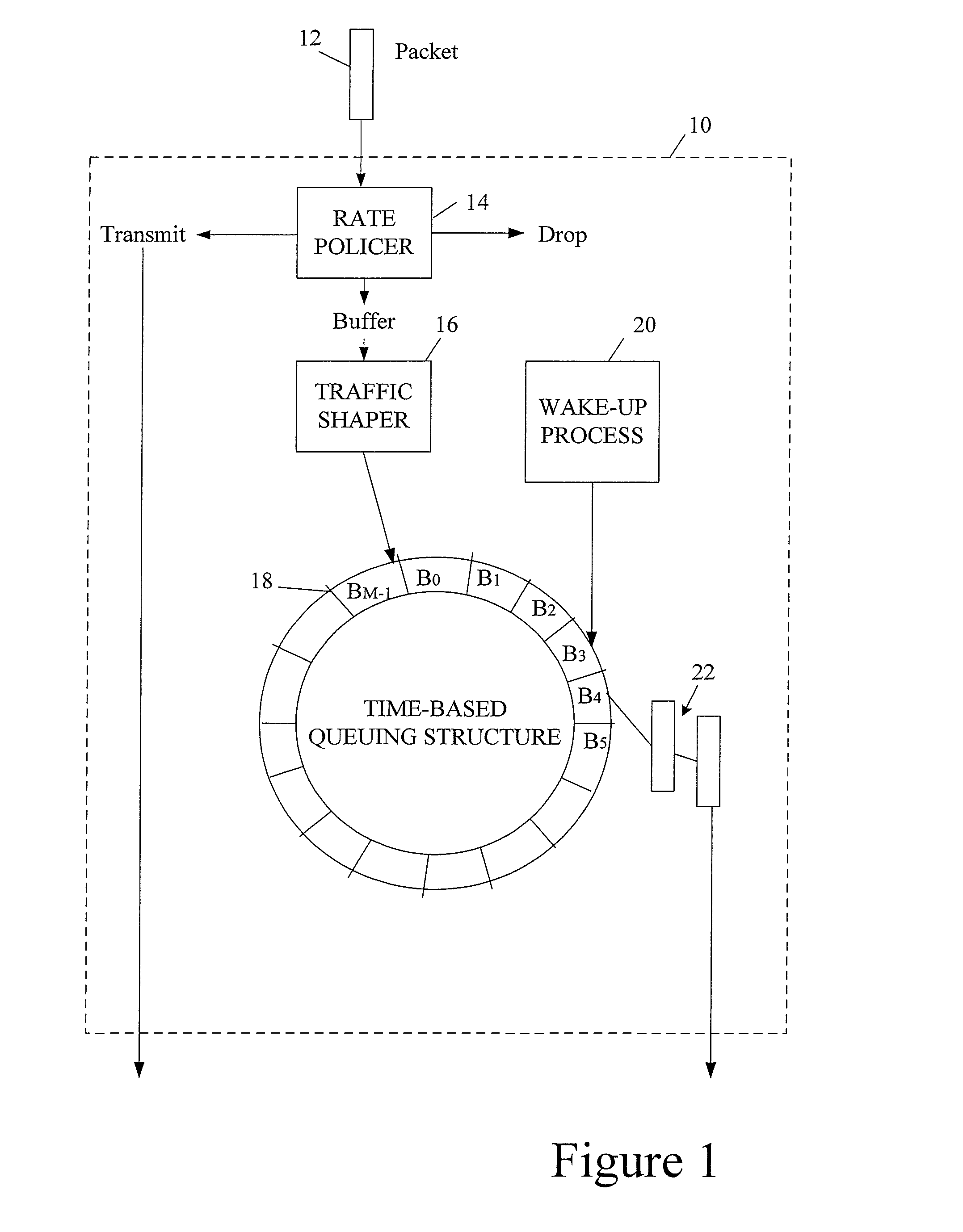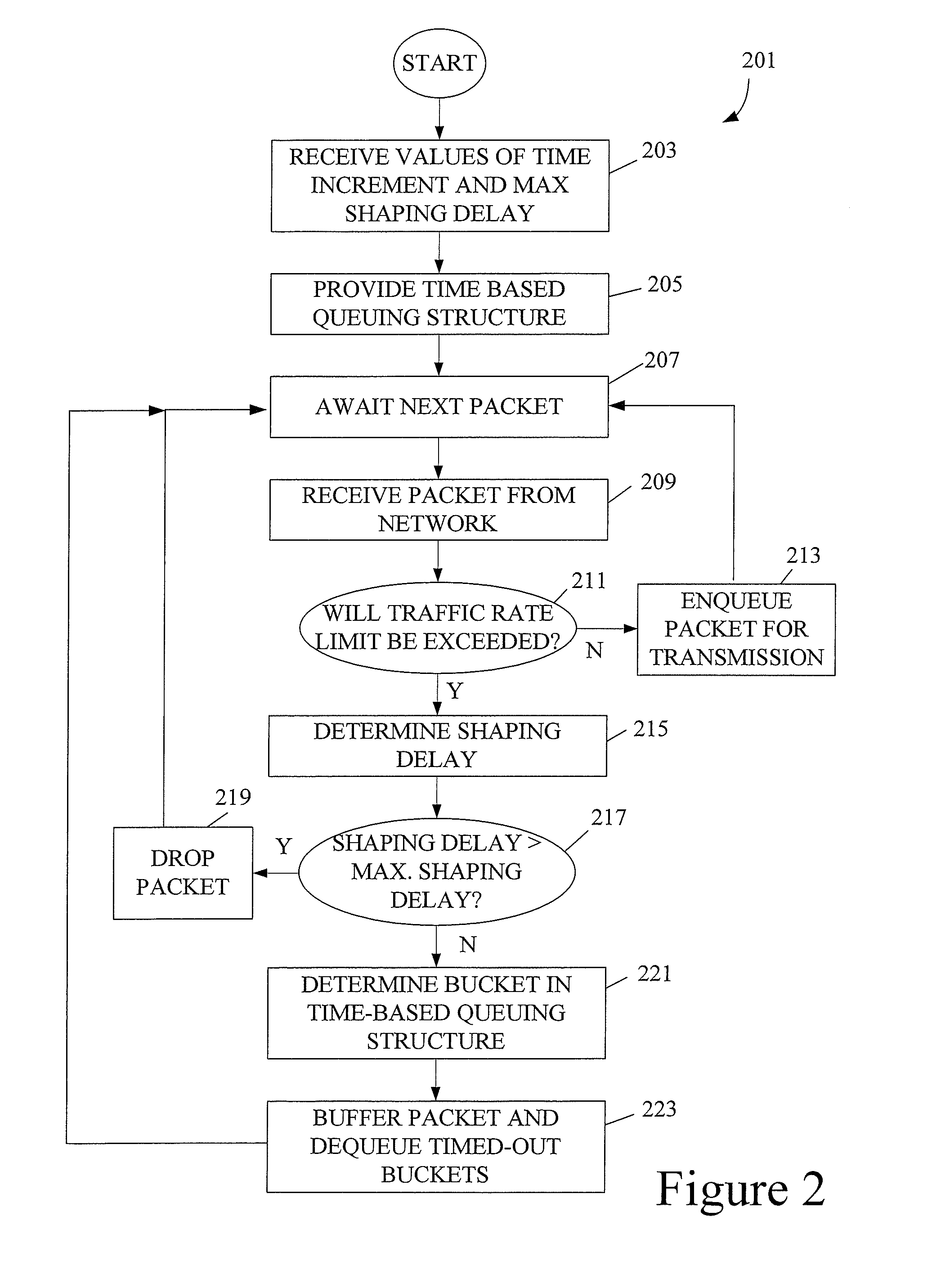Network traffic shaping using time-based queues
- Summary
- Abstract
- Description
- Claims
- Application Information
AI Technical Summary
Benefits of technology
Problems solved by technology
Method used
Image
Examples
Embodiment Construction
[0028]As mentioned, this invention pertains to buffering data in time-based queues. A time-based queue is a queue that dequeues its contents (i.e., items that it is buffering) at scheduled times. In most embodiments described herein, a time-based queue will dequeue all of its contents at the scheduled time. However, there may be alternative embodiments in which it is desirable to dequeue only a portion of a time-based queue's buffered data. A time-based queue will typically be implemented with a plurality of like queues concatenated in time. The first of these queues may dequeue after a particular increment of time has elapsed. Thereafter, after that same increment of time has elapsed a second time, the second time-based queue dequeues its contents. Then, after yet another such increment of time elapses, a third queue dequeues its contents and so on. In this manner, every so many milliseconds, one of the time-based queues dequeues its contents.
[0029]This approach to queueing network...
PUM
 Login to view more
Login to view more Abstract
Description
Claims
Application Information
 Login to view more
Login to view more - R&D Engineer
- R&D Manager
- IP Professional
- Industry Leading Data Capabilities
- Powerful AI technology
- Patent DNA Extraction
Browse by: Latest US Patents, China's latest patents, Technical Efficacy Thesaurus, Application Domain, Technology Topic.
© 2024 PatSnap. All rights reserved.Legal|Privacy policy|Modern Slavery Act Transparency Statement|Sitemap



